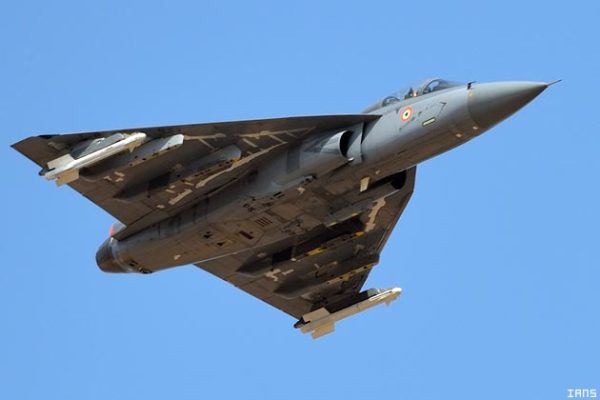The maiden flight of the Naval variant of the Light Combat Aircraft (LCA) was carried out successfully today at HAL Airport, Bangalore. The first prototype of the LCA Naval variant NP-1, took to the skies at 1210 AM, today.
The flight which lasted for about 20 minutes within the designated flight envelope had carried out the planned tests successfully. The test flight was carried out with landing gear extended as a routine practice during the maiden flight. With this successful flight test, the LCA development programme has crossed another major milestone.
The LCA (NP-1) was piloted by Come T.A Maolankar, Chief Test Pilot and co-piloted by Wg Cdr M Prabhu, Flight Test Engineer of NFTC. The event was witnessed by a host of top dignitaries including Dr. V.K Saraswat, Scientific Advisor & DG(DRDO), Chief of Air Staff, Air Chief Marshal NAK Browne, PVSM AVSM VM ADC, Deputy Chief of Naval Staff Vice Admiral Satish Soni, AVSM, NM, Commandant Air Force Training Command Air Marshal Rajinder Singh, AVSM, VM, Chairman HAL Shri R.K Tyagi, DS & Programme Director (CA) & Director ADA Shri PS Subramanyan, Project Director of LCA Navy, Cmde (Retd) C. D Balaji and Dr. K Tamilmani of CEMILAC.
The development plan of the Naval version envisages building of 2 prototypes, a two seat trainer (NP-1) and a single seat fighter (NP-2), as technology demonstrators to carry out carrier suitability certification and weapons integration. HAL is the major partner to ADA, for the Design & Development of the Light Combat Aircraft.
In the Naval variant, the responsibilities of HAL include Design of General Systems viz. Fuel System, Environmental Control System, Hydraulics, Electrical, Communication System, Landing Gear, Arrestor Hook, LEVCON Modification. HAL is also responsible for manufacturing of prototypes, system Integration & installation, Ground Testing and the Integrated Flight Control System Test facility.
The additional features that the naval version would have when compared to the other version of LCA are the LEVCON (Leading Edge Vortex Control Surface) to reduce the forward speed of the aircraft during carrier landing, telescopic landing gear with high sink rate, arrester hook for deck recovery and fuel dump system for emergency deck recovery. The aircraft is specifically designed for take-off from a 14 degree ramp on the aircraft carrier deck and use the Arrester Hook System to facilitate landing within the deck length of 90 meters.
The Naval prototype (NP-1) had its roll out earlier in the presence of the Hon’ble Raksha Mantri and the Chief of the Naval Staff in Jul 2010.










